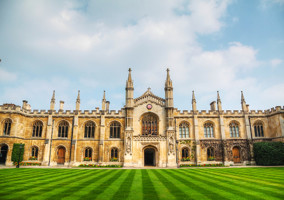Less than 10% of the largest 100 charities publish the exact salary of their highest earner directly on their website, although a further 42% make it available via their annual report.
Civil Society News looked at whether the largest 100 charities posted salaries on their websites, and not just in their annual accounts.
Many charities posted links to accounts on their websites, explaining that salary information could be found there. In our analysis this has not been counted as being directly on a website.
Of the 100 charities assessed, only nine posted salary details directly on their websites. A further 42 charities posted the exact figure of the highest earner in their accounts, whilst 48 posted a salary band. One charity in the largest 100 does not employ staff.
The Charity Finance 100 Index, which is compiled by Civil Society Media's Charity Finance magazine and ranks the largest charities in the UK by their average income over three years, was used as the basis for the analysis.
NCVO: ‘Charities not doing the basics will increasingly look out of place’
Best-practice recommendations from NCVO, established a number of years ago following media criticism of charity executive pay, say that charities should publish the exact salary of their highest earners.
Its report, published in 2014, says details should appear on its website “no more than two clicks away from its homepage”.
Responding to Civil Society's analysis, Elizabeth Chamberlain, head of policy at NCVO, said: “There's a clear direction of travel towards greater transparency, and charities not doing the basics will increasingly look out of place.
“Demonstrating transparency is an important part of establishing and reinforcing credibility and trust not just for individual organisations but for the whole sector.”
‘We owe it to our donors to be open and transparent’
Of those charities that are most transparent, many citied a responsibility towards donors as reason for their openness.
The British Heart Foundation (BHF) said “we owe it to our donors to be open and transparent”.
Kerry Smith, director of people and organisational development at BHF, said: “Thanks to the generosity of our incredible supporters, we’re the UK’s largest funder of non-commercial research into heart and circulatory diseases, which has contributed to countless discoveries that have saved and improved lives.
“We owe it to our donors to be open and transparent about how we spend their money, and that this information is easily accessible. As part of this commitment, we choose to publish a clear explanation of our reward policy and pay details of our chief executive in both our annual report and on our website.”
The RNLI cited similar reasons for its decision. A spokesperson said: “As a charity funded by the generosity of our incredible supporters, we are fully accountable to them. Therefore, we feel it’s important to be as transparent as possible, including on the subject of chief executive pay.”
RNLI's chief executive Mark Dowie has taken a 50% pay cut during the coronavirus pandemic.
Similarly, a spokesperson for Sightsavers said “we strive to be as open and transparent with our supporters as we can”.
They said: “Sightsavers’ chief executive, Dr Caroline Harper, has a salary of £129,500. She has no bonus scheme or car allowance and the same pension rights as all other UK staff. The chief executive salary is agreed by the board of trustees after careful consideration by the remuneration committee, which looks at benchmarking evidence of the median salary for our type of organisation.
“The trustees believe this salary reflects the varied and challenging role that Dr Harper holds, and the impact Sightsavers has under her leadership. This information is all available on our website because we strive to be as open and transparent with our supporters as we can.”
Range of salaries reported
The charities choosing to publish figures on their websites ranged from those which pay comparatively small salaries to larger ones. The median chief executive salary for 2019 at the largest 100 was £155,000.
The Salvation Army's top earner receives between £150,000 and £160,000. However, its territorial leader, the equivalent of its chief executive, is given a relatively small remuneration of £15,500. Details of this are given on the charity's website.
A Salvation Army spokesperson said: “As a church and charity with responsibilities towards our beneficiaries, supporters, staff and volunteers, we are committed to being transparent and accountable. That is why we publish a full salary breakdown of higher-earning staff (£60,000 and over) on our website.
“Key management personnel of The Salvation Army comprise officers and employees. Salvation Army officers do not receive a salary; they receive an allowance based on length of service and, as ministers of religion, are provided with furnished accommodation and a car. The allowances received by officers in positions of key management range from £15,177 to £18,965 per annum.
“For employees, we are committed to ensuring a proper balance between paying salaries which will enable us to attract and retain staff of the appropriate calibre and careful stewardship of charitable funds. All senior salaries are benchmarked against senior staff salaries of comparable organisations in the not-for-profit sector.”
'We follow the principles of good governance set out in the Charity Governance Code'
The General Medical Council (GMC) said that it follows the Charity Governance Code and this is a key motivator for its transparency.
A GMC spokesperson said: “As the independent regulator of doctors, we follow the principles of good governance set out in the Charity Governance Code, including acting with openness and accountability. We want to be leaders in the way we follow these values and believe we should be able to clearly account for both our regulatory and operational decisions.
“We summarise the salaries of our highest paid staff in our annual accounts and we make these publicly available online for clarity and ease of reference.”
Other charities which post the salaries of their highest earner include Christian Aid, Oxfam, Historic Environment Scotland, NSPCC and Save the Children (for its international chief executive).
VSO publishes the exact salary of its highest earner in its accounts, and has an explanation on its website about its most recent chief executive taking a lower salary than the previous one.
Kathryn Gordon, VSO’s director of people and organisation development, said: “At VSO we want to engage with committed people who can drive organisational performance. Our approach to pay is to pay the appropriate rate for each role, and depending on where individual in the role is. We issue national contracts at all levels, we benchmark in each market every year. VSO does not operate a bonus scheme.”
Related articles












